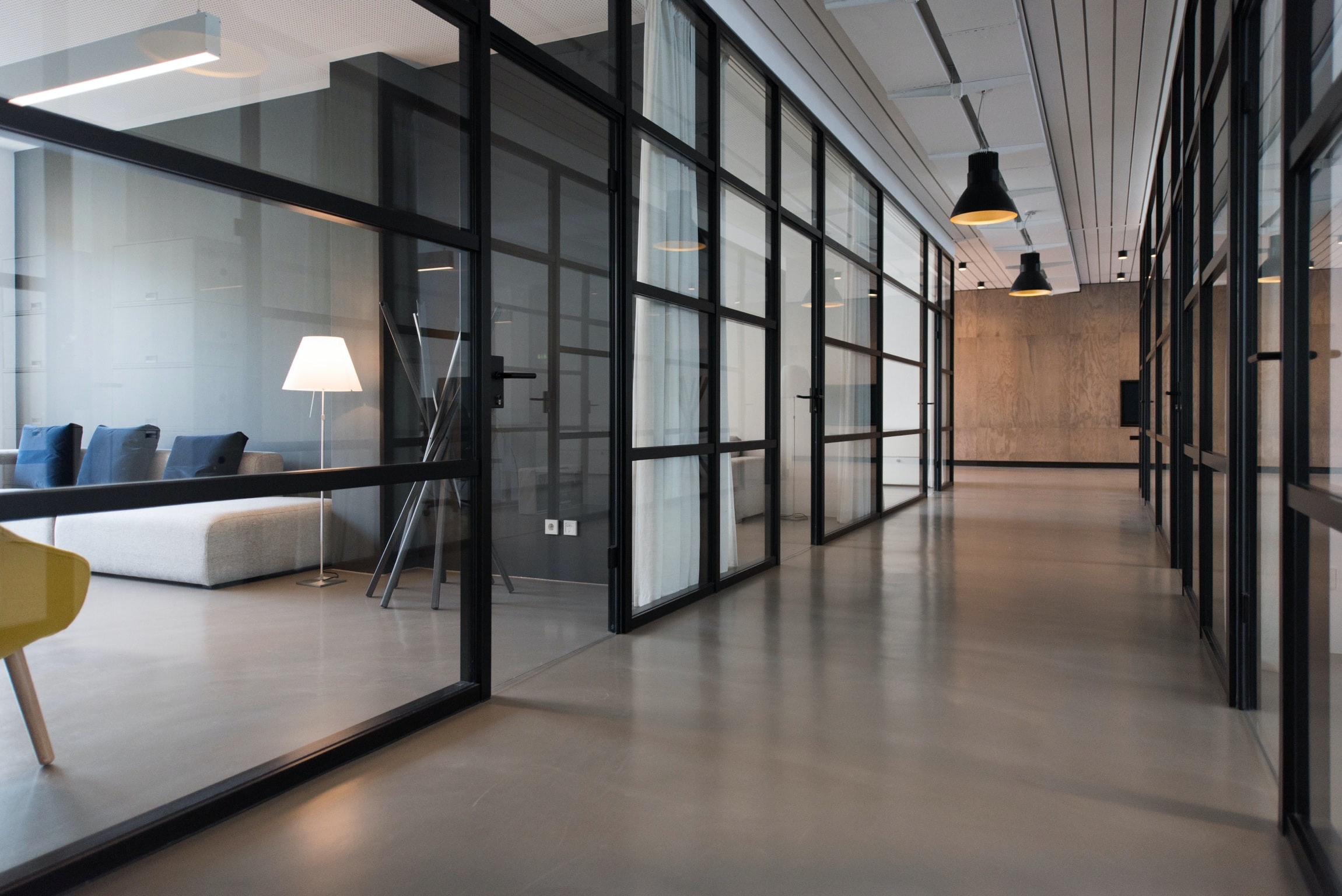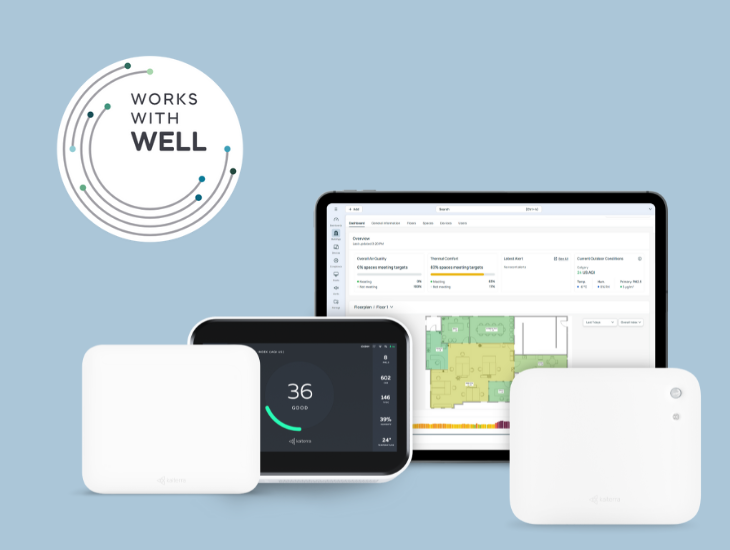Newsletter
As a facility manager, you’re responsible for keeping on-site employees productive and ensuring they work in safe and supportive environments. In this context, the term “healthy building” has grown popular in recent years. But what does it mean - or is it a buzzword that doesn’t mean much? If you’re asking these questions, this article is for you.
In the next few sections, we’ll cover the basics of what is a healthy building, why they’re of interest to facility managers, and what are the components and foundational elements of a healthy building.
What is a Healthy Building? A Quick Definition
As we’ve written in our guide to healthy buildings and indoor air quality, a healthy building is a commercial, residential, or public building which is designed to promote the health, safety, and wellbeing of its inhabitants
It’s worth noting that this is an emerging field so definitions aren’t necessarily clear cut - but the basic idea is to design indoor spaces and systems in ways that optimize the health and wellbeing of occupants, from lighting to ventilation to basic safety.
Healthy Buildings and Facility Management: Why Should You Care?
The International Facility Management Association lists a series of responsibilities that fall under the facility manager’s domain. Healthy buildings can directly impact most of these - including supporting the productivity of facilities and personnel, managing risk, mitigating environmental impact, and leveraging technological solutions.
Showing a real commitment to health and safety is crucial to gain employee trust and to increase retention, as well as to prevent sick leave and absenteeism. Some aspects of healthy buildings - such as indoor air quality - can help directly reduce costs and make buildings more sustainable by reducing energy waste. But the bulk of cost savings will come from employees being more productive at work, missing fewer days due to sick leave, and feeling satisfied and cared for in their workplace.
Key Elements and Foundations of a Healthy Building, and how FMs can Promote Them
The seminal document on healthy buildings is the 2017 report by the Harvard T.H. Chan School of Public Health - The 9 Foundations of a Healthy Building. You can find the full report here (PDF), but if you’re pressed for time, we’ve summarized the items you can have the most influence over as a facility manager, along with some additional information and links for further reading.
Ventilation
What is it?
Ventilation is the process of bringing fresh air from the outside into the building. If at home you might just crack open a window, in commercial buildings, this will typically be handled by HVAC systems,
Why does it matter?
Poor ventilation can cause the air to feel stuffy and unpleasant which can reduce productivity. Air quality in poorly ventilated spaces is worse, and will typically contain high concentrations of pollutants which can cause both short and long-term health symptoms (see next item). It is a leading cause of sick building syndrome.
What can you do to improve it?
- Continuously monitor indoor air quality to identify and address issues with HVAC systems in real-time
- Ensure HVAC systems are regularly maintained
- Leverage air quality data to implement demand-controlled ventilation
Further reading - ventilation
Air Quality
What is it?
Indoor air quality is an umbrella term used to describe the presence and abundance of harmful agents in indoor environments. These substances include particulate matter, volatile organic compounds (VOC), and carbon dioxide (CO2). Air quality is closely tied to ventilation.
Why does it matter?
Buildings with poor indoor air quality hurt employee productivity, increase sick leave and absenteeism, and make recruiting and employee retention more challenging. Air pollution has also been shown to affect human cognition and hurt decision-making skills and informed risk-taking.
How can you improve it?
- Implement continuous air quality monitoring system to keep track of key air quality parameters
- Promptly address any issues with ventilation systems
- Ensure air filters are properly maintained and cleaned
- Use real-time air quality data to trigger relevant responses in building automation systems
Further reading - air quality
- Poor Indoor Air Quality and Sick Building Syndrome
- How IAQ Monitoring Optimizes HVAC System Performance
- 2021’s Indoor Air Quality Monitoring Guide
Water Quality
What is it?
Contaminated water is a leading cause of disease globally and can carry a host of microbial diseases. In the US drinking water is generally of very good quality - however, much of the water infrastructure is very old and has deteriorated over the years, which can lead to contamination and decline in tap water quality.
Why does it matter?
While outbreaks of waterborne illnesses are rare in the United States, some smaller drinking water systems are not routinely tested for substances such as lead and copper, which have been linked to heart disease, hypertension, nerve disorders, and other health issues. Concerns have also been raised around returning to previously-empty buildings with the winding down of COVID restrictions, which could potentially cause the water to stagnate.
How can you improve it?
- Implement regular testing for water quality
- Install and maintain water purification systems
- Flush building water systems after periods of low or no usage
- Monitor water usage to identify potential plumbing leaks
Further reading - water quality
- Improving water quality in commercial buildings
- Maintaining or restoring water quality in buildings with low or no usage
Noise
What is it?
From a neighbor playing loud music to a construction site popping up nearby, we’ve all been exposed to levels of noise that we found uncomfortable or distracting. In workplaces, noise can be generated by HVAC and other systems, office equipment, vacuuming, or even conversations between occupants (especially in open floor plans).
Why does it matter?
Long-term exposure to very high levels of noise can lead to hearing loss or deterioration; background noise is not as dangerous but hurts productivity and prevents clear communication. Noise exposure can also alter the function of the body’s internal systems, and is associated with health issues such as hypertension.
How can you improve it?
- Provide quieter spaces that allow for undisturbed work
- Make an effort to control indoor sources of noise such as office equipment
- Position noise sources away from workers
- Place barriers and screens to block the path of sound from noisy equipment or areas
Further reading - noise reduction
- The UK’s Health and Safety Agency’s Advice on Noise Reduction for Employers
- Occupational Health Toolkit - Noise Control Measures
Thermal Health
What is it?
Thermal health or comfort refers to the combination of thermal conditions that affect the occupants’ sense of comfort - with the two main ones being temperature and relative humidity. Due to the climate-controlled nature of modern commercial buildings, they can be thermally stable and optimized to maximize health and productivity.
Why does it matter?
Studies have shown that when people find thermal conditions uncomfortable, there is a significant impact on their performance in offices, schools, and homes; employees who are forced to work in uncomfortable temperatures will typically report lower job satisfaction. Extreme heat conditions can also have negative impacts on health, while prolonged exposure to cold temperatures might weaken the immune system.
How can you improve it?
- Allow individuals or smaller groups to control thermal conditions where possible
- Monitor temperature and humidity to identify areas of the building that suffer from thermal comfort issues
- Use building automation systems to react to changes in thermal comfort parameters in real-time
Further reading - thermal health
- Optimize Building Comfort and Workplace Wellness
- How To Effectively Leverage Your IAQ Data Through Building Automation
Dust and Pests
What is it?
Dust contains a multitude of contaminants that can be inhaled, absorbed through human skin, or inadvertently ingested. It’s estimated that adults ingest up to 100mg of house dust just going about their day. Office environments where people are constantly entering and exiting from the outdoors can often be dustier.
Why does it matter?
Dust acts as a reservoir for harmful agents such as viruses, bacteria, and chemicals - and unlike airborne chemicals, the ones in dust can remain a problem even after the source is removed. Pests such as dust mites and roaches also carry allergens as well as the same type of unwanted agents and have been associated with respiratory symptoms and asthma.
How can you improve it?
- Clean surface regularly
- Keep environments clean and ensure trash is regularly removed
- Have a regular plan for pest management and control
- Identify and respond to pest problems as soon as they arise
Moisture
What is it?
Common sources of moisture include plumbing leaks, condensation, poorly maintained drain pans, and outdoor conditions directing water into the building. Water damage is very common, and has been found in up to 36% of homes in Europe and North America, while 45% of offices had active leaks at the time of inspection.
Why does it matter?
Moisture causes mold spores to reproduce, typically on carpets, ceiling tiles, insulation, walls, or in HVAC systems. In addition to unpleasant odors, these fungi can have negative health impacts - mostly for the elderly and those with compromised immune systems. Mold has also been shown to worsen asthma severity, allergic symptoms, and airway infections
How can you improve it?
- Conduct regular inspections of areas prone to accumulate moisture
- When mold is identified, immediately take action to replace or alter the source
- Avoid sub-cooling the space as this can contribute to condensation
Further reading - moisture
Safety and Security, Lighting and Views
These last two elements are also covered in the Harvard report, but are often more systemic and go beyond the day-to-day responsibilities of facility managers - so we won’t cover them in this article. If you’re interested, you can find additional details in the report, which is linked above.
Starting Your Journey to Healthy Buildings
As you can see, turning your building into a healthy building is more of a marathon than a sprint, and requires a holistic approach to many different aspects of your indoor environment. However, this shouldn’t deter you from starting - as improving any single area will undoubtedly help your facilities become more efficient and welcoming to occupants. And if you’re not sure where to begin- learn why we recommend starting with indoor air quality.






.png?width=200&height=148&name=Menu%20C%20(2).png)

.png?width=307&height=228&name=Menu%20-%20D%20(1).png)
.png)





